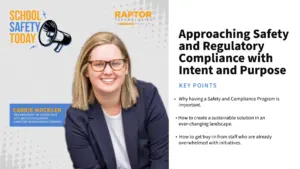Why Technical Training Advisors in Kentucky are a Primary Focus for Pandemic Recovery Funds
One of the more significant side effects of the pandemic on K-12 education in the U.S. was the decreased participation in technical training advisors, or Career and Technical Student Organization (CTSO) advisors. Robin Linton, the CTSO Director for the state of Kentucky, said CTSO involvement fell, at the local and state level, by close to 80% during the pandemic.
This decrease is concerning because CTSOs flourish best as an instructional tool when integrated into a Career and Technical Education curriculum by trained, dedicated, enthusiastic educators.
Some good news finds its way to increase those sagging technical training advisor participation numbers. The Kentucky Department of Education’s approved Elementary and Secondary Emergency Relief Plan (ESSER) allocated $45,000 to support CTSO training. This past fall, more than 215 Kentucky teachers participated in training for new CTSO advisers.
Ron J. Stefanski, host of MarketScale’s “DisruptED,” finds Kentucky’s decision to allocate ESSER funds inspiring and fascinating because the state often puts an educational priority on college preparedness and not enough focus on career readiness.
Ron’s Thoughts
“Recently, Kentucky announced that it’s going to be using its ESSER funds, its COVID recovery funds, to fund training and support for career and tech advisors for students.
What do I think of this? I think this is an incredibly fascinating development. Why do I say that? Because for years we have focused on college readiness oftentimes I feel at the expense of career readiness. And when you look at all the alternative paths now available for students to pursue along an educational pathway that doesn’t move from point A to point B, but may take side ramps to an apprenticeship, to a certificate program, and then back again to college, I think it’s really important to have people who can help students sort that out. So I’m interested to see what transpires in Kentucky.”
Article written by James Kent.







